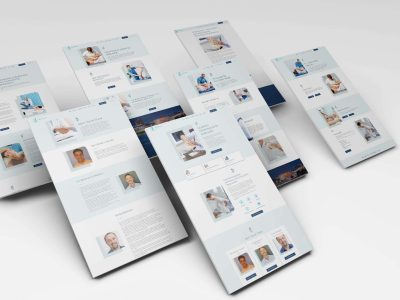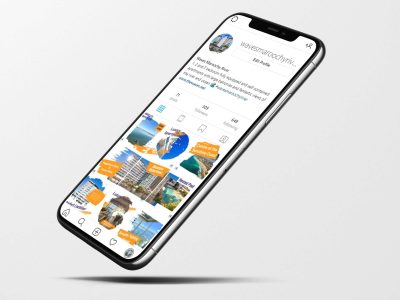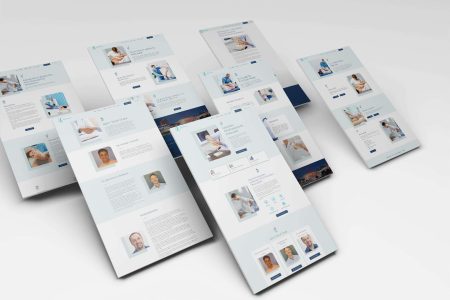In the rapidly evolving digital landscape, businesses are constantly seeking ways to enhance their websites and convert more visitors into customers. At the heart of this endeavor is conversion rate optimization (CRO), a critical aspect that can make or break an online business. The significance of effective CRO cannot be overstated, as it directly impacts a company’s bottom line. To stay competitive, businesses must leverage advanced technologies that provide deeper insights and more precise results. Enter artificial intelligence (AI), a game-changer in the realm of CRO. AI brings a new dimension to optimization, offering powerful tools that automate and refine processes. By delivering personalized user experiences and conducting complex A/B and multivariate testing, AI helps businesses understand and meet customer needs more effectively. Through predictive analytics, AI foresees trends and behaviors, facilitating smarter CRO strategies. Enhancing the customer journey becomes seamless with AI’s ability to analyze vast amounts of data and provide actionable insights. Numerous case studies highlight how businesses have successfully implemented AI-driven CRO techniques, achieving remarkable results. This comprehensive guide delves into how AI revolutionizes CRO, from understanding its role and tools to practical applications and key takeaways.
Content
Introduction to Conversion Rate Optimization (CRO)
Defining Conversion Rate Optimization
Conversion rate optimization (CRO) is a systematic process aimed at increasing the percentage of website visitors who take a desired action—whether it’s making a purchase, filling out a form, or subscribing to a newsletter. CRO involves understanding how users navigate a website, what actions they take, and what prevents them from completing a particular goal. By analyzing user behavior and leveraging various tools and strategies, businesses can identify barriers to conversion and implement improvements. The ultimate objective of CRO is to enhance the customer experience and increase the efficiency of marketing efforts, resulting in more conversions without necessarily increasing traffic. CRO is a multidisciplinary practice, encompassing elements of psychology, user experience design, and data analysis to ensure that every aspect of the user’s interaction with the site is optimized for maximum effectiveness.
The Business Impact of Effective CRO
Effective conversion rate optimization can significantly impact a business’s bottom line by transforming more of its existing web traffic into paying customers. Rather than relying solely on increasing the volume of site visitors, CRO focuses on making the website as efficient as possible, thereby maximizing return on investment (ROI). Higher conversion rates mean that marketing dollars are spent more effectively, as more visitors are converted into leads or customers without additional advertising expenses. Furthermore, a well-optimized site provides a better user experience, which can lead to increased customer satisfaction and loyalty. Over time, these improvements in user experience and conversion rates can result in higher average order values, longer customer lifetime value, and a stronger competitive position in the market. Thus, CRO is not just a tactic but a strategic approach to sustainable business growth.
Common Challenges in CRO
Despite its benefits, conversion rate optimization presents several challenges that businesses must navigate. One of the most significant obstacles is the lack of a clear understanding of user behavior and preferences. Without accurate data and insights, making informed decisions to improve conversion rates becomes difficult. Additionally, optimizing a website for conversions requires continuous testing and iteration, which can be resource-intensive and time-consuming. Resistance to change within an organization can also impede the CRO process, as stakeholders might be hesitant to implement new strategies or technologies. Another common challenge is balancing the need for immediate results with long-term strategic goals. Quick fixes might offer short-term improvements but can compromise the overall user experience and long-term success. Overcoming these challenges requires a comprehensive CRO strategy that incorporates data-driven decision-making, ongoing testing, and cross-functional collaboration.
The Importance of CRO for Businesses
An effective conversion rate optimization (CRO) strategy is crucial for maximizing the return on investment (ROI) of marketing efforts. By focusing on improving the efficiency of a website, businesses can gain more conversions from their existing traffic, reducing the need for costly advertising campaigns to attract new visitors. This approach ensures that every dollar spent on driving traffic to the site yields the highest possible return. Furthermore, an optimized conversion process means that businesses can allocate their budgets more effectively, channeling resources into areas that generate the most significant impact on revenue and growth.
Better conversion rates lead to improved customer satisfaction and loyalty. When users find a website easy to navigate and the buying process seamless, they are more likely to complete their purchases and return in the future. A positive user experience not only encourages repeat business but also generates word-of-mouth referrals and positive reviews, which further drive traffic and conversions. By prioritizing CRO, businesses can create a more satisfying customer journey, fostering long-term relationships with their audience and building a sustainable competitive advantage.
Conversion rate optimization also provides valuable insights into customer behavior and preferences. Through continuous testing and analysis, businesses can uncover which elements of their website resonate most with users and which barriers prevent conversions. This data-driven approach allows for more informed decision-making, ensuring that any changes made to the site are based on concrete evidence rather than assumptions. By understanding their customers better, businesses can tailor their offerings and marketing strategies to meet their audience’s needs more precisely. This ongoing feedback loop not only improves conversion rates but also enhances overall business performance and customer satisfaction.
Understanding the Role of AI in CRO
Automating Data Analysis and Insights
Artificial intelligence (AI) in conversion rate optimization (CRO) excels at automating the process of data analysis, helping businesses quickly interpret vast amounts of user data to uncover actionable insights. Traditional data analysis methods can be time-consuming and prone to human error. In contrast, AI employs sophisticated algorithms to process and analyze user behavior patterns in real-time, identifying trends and anomalies that might go unnoticed by human analysts. This automation not only accelerates the decision-making process but also increases its accuracy, ensuring that businesses can react promptly to changing user preferences and market conditions. By leveraging AI-driven insights, companies can make more informed decisions that enhance the overall effectiveness of their CRO strategies, leading to higher conversion rates and improved user experiences.
Enhancing Personalization with AI
One of the most impactful applications of AI in CRO is its ability to deliver highly personalized user experiences. AI algorithms can analyze user data to predict individual preferences and behaviors, allowing businesses to tailor content, product recommendations, and marketing messages to each visitor. This level of personalization significantly boosts engagement and conversion rates, as users are more likely to respond positively to content that aligns with their interests and needs. For instance, AI can dynamically adjust website elements such as headlines, images, and call-to-action buttons based on user profiles and past interactions. By creating a more relevant and personalized browsing experience, AI helps businesses foster a deeper connection with their audience, encouraging repeat visits and higher conversion rates. This personalized approach ultimately makes the user feel valued and understood, which is crucial for long-term customer loyalty.
AI-Driven Optimization Techniques
AI-driven optimization techniques have revolutionized the way businesses approach CRO by automating and refining testing processes. Traditional A/B testing, which involves comparing two versions of a webpage to see which performs better, can be limited in scope and slow to yield results. AI enhances this process through multivariate testing, which evaluates multiple variables simultaneously to identify the most effective combinations. Additionally, AI algorithms can continuously monitor user interactions and dynamically adjust elements in real-time for ongoing optimization. This adaptive approach ensures that websites are always performing at their best, responding to user behavior instantly. By automating these optimization tasks, AI frees up valuable time for marketers and web developers, allowing them to focus on strategic initiatives. The result is a more efficient, effective CRO process that consistently drives higher conversion rates and enhances the overall user experience.
Transform your business with custom AI solutions from a leading Artificial Intelligence Agency.
AI-Powered Tools for CRO
AI-powered tools play a crucial role in modernizing conversion rate optimization (CRO) by enabling businesses to analyze data more efficiently and implement sophisticated strategies. One of the key tools in this space is AI-driven heat mapping software. Heat maps visually represent where users click, scroll, and spend the most time on a webpage, providing insights into user behavior and interaction patterns. With AI, these heat maps can be analyzed more precisely and provide actionable recommendations for improving layout and content placement. This helps businesses identify areas where users are disengaging or encountering friction, allowing for targeted optimizations that enhance the user experience and drive higher conversions.
Another essential AI-powered tool for CRO is chatbots, which leverage natural language processing (NLP) to engage with website visitors in real-time. Chatbots can assist users by answering questions, guiding them through the purchasing process, and providing personalized product recommendations based on their browsing history and preferences. This immediate interaction can significantly reduce bounce rates and cart abandonment, as users receive instant support tailored to their needs. Furthermore, chatbots can gather valuable data on user inquiries and behavior, providing businesses with deeper insights into customer pain points and preferences. By integrating chatbots into their CRO strategy, companies can offer a more interactive and personalized user experience that drives higher engagement and conversion rates.
AI-powered recommendation engines are another critical tool in enhancing CRO efforts. These engines analyze user data to make personalized suggestions for products, services, or content that are most likely to interest each visitor. By leveraging machine learning algorithms, these recommendation systems continuously improve their accuracy, learning from user interactions to refine their suggestions over time. This level of personalization not only increases the likelihood of conversion but also boosts average order values and customer satisfaction. For instance, an e-commerce site can use an AI-powered recommendation engine to showcase products that complement items a user has already viewed or added to their cart, thereby encouraging additional purchases. This targeted approach ensures that users are exposed to the most relevant products, enhancing their shopping experience and driving higher sales.
Experience effortless, cost-effective social media management with AI technologies
Personalized User Experiences with AI
Dynamic Content Personalization
Dynamic content personalization is a powerful application of AI that tailors website content in real-time based on individual user preferences and behavior. Using data from past interactions, demographics, and browsing patterns, AI algorithms can customize everything from headlines and images to product recommendations and call-to-action buttons. This ensures that each visitor receives a unique and relevant experience, which increases engagement and conversion rates. For example, a returning visitor might see personalized product suggestions based on their previous purchases, while a new visitor might be greeted with content tailored to their geographic location or referral source. By continuously adapting the content to suit user interests and behaviors, businesses can create a more compelling and relevant user experience, leading to higher satisfaction and a greater likelihood of conversions.
Behavioral Targeting
Behavioral targeting leverages AI to analyze user behavior and segment audiences based on their actions and preferences. This allows businesses to deliver highly relevant and personalized marketing messages to specific audience segments, enhancing the likelihood of engagement and conversion. AI algorithms track and analyze patterns such as page visits, click-throughs, time spent on site, and purchase history to build detailed user profiles. These profiles enable marketers to target users with tailored content, offers, and recommendations that match their interests and needs. For example, a visitor who frequently views high-end products might receive personalized promotions for luxury items, while a budget-conscious shopper might be shown discount offers and budget-friendly options. By accurately targeting users based on their behavior, AI helps businesses deliver more effective marketing campaigns that resonate with their audience and drive higher conversion rates.
Predictive Personalization
Predictive personalization leverages AI to anticipate user needs and preferences before they even interact with a website. By analyzing vast amounts of data, including past behaviors, buying patterns, and external factors, AI can make accurate predictions about what individual users might be interested in or looking for. This allows businesses to proactively present relevant content, products, or offers, creating a seamless and intuitive user experience. For instance, an AI-powered system might predict that a user who frequently purchases running gear is likely to be interested in a new line of athletic shoes and display those products prominently upon their next visit. This anticipatory approach not only enhances the user experience by reducing the effort required to find relevant items but also increases the likelihood of conversions by presenting users with what they want before they even realize they want it.
AI-Driven A/B Testing and Multivariate Testing
AI-driven A/B testing has revolutionized the way businesses approach conversion rate optimization by making the process faster, more efficient, and insightful. Traditional A/B testing involves comparing two versions of a webpage to see which performs better; however, this method can be time-consuming and often limited in scope. AI optimizes this process by automating the setup, monitoring, and analysis phases. Machine learning algorithms can quickly identify which variations are driving the most conversions, allowing for faster implementation of successful changes. Moreover, AI can analyze vast datasets simultaneously, revealing complex interactions between different elements of a webpage that traditional methods might miss. This capability enables businesses to fine-tune their online content more accurately and promptly, leading to continuous improvements and higher conversion rates.
Multivariate testing takes the concept of A/B testing a step further by allowing multiple variables to be tested simultaneously. With the power of AI, businesses can efficiently manage these complex tests, evaluating various combinations of page elements such as headlines, images, buttons, and layouts. AI algorithms can swiftly determine which combinations produce the best results, providing deeper insights into user preferences and behavior. This comprehensive approach enables businesses to optimize an entire web page holistically rather than making isolated changes. By understanding how different elements interact and contribute to user engagement and conversions, companies can create a more cohesive and optimized user experience. The ability to run extensive multivariate tests with AI significantly enhances the scope and effectiveness of CRO strategies, driving better business outcomes.
In addition to speed and efficiency, AI-driven A/B and multivariate testing offer advanced analytical capabilities that traditional methods lack. AI can utilize predictive analytics to forecast the potential impact of changes before full implementation, saving valuable time and resources. By analyzing historical data and current user behavior, AI can predict which variations are likely to succeed, allowing businesses to prioritize changes with the highest potential impact. Additionally, AI can segment test results based on various user demographics and behaviors, providing more granular insights into how different segments respond to changes. This level of detail enables businesses to tailor their optimization strategies to specific audience segments, maximizing the overall effectiveness of their CRO efforts. By leveraging AI in A/B and multivariate testing, companies can achieve more accurate, efficient, and impactful optimizations, ultimately driving higher conversion rates and better user experiences.
Elevate your business with DIGITALON AI’s custom AI services and solutions.
Predictive Analytics in CRO
Anticipating User Behavior
Predictive analytics in conversion rate optimization (CRO) enables businesses to anticipate user behavior with a high degree of accuracy. By leveraging machine learning algorithms and vast datasets, predictive models can forecast how users are likely to interact with a website based on their past behaviors, preferences, and external influences. This predictive capability allows businesses to preemptively adjust content, layout, and user interface elements to better align with user expectations, thereby enhancing the overall user experience and increasing the likelihood of conversions. For instance, if the data indicates that users who visit a certain product page often leave without purchasing, the system can recommend adjustments such as altering the product description, improving images, or offering special promotions. These proactive adjustments ensure that the website remains attuned to user needs, leading to smoother, more satisfying interactions and higher conversion rates.
Optimizing Marketing Campaigns
Predictive analytics plays a crucial role in optimizing marketing campaigns by identifying trends and patterns that can be leveraged for more effective targeting. By analyzing historical data and current user behavior, predictive models can determine which marketing strategies are most likely to succeed with specific audience segments. This enables marketers to allocate resources more efficiently and craft personalized campaigns that resonate with their target audiences. For example, a predictive model might reveal that a segment of users responds particularly well to email promotions featuring product bundles. Marketers can then tailor their email campaigns to include more of these offers, thereby increasing engagement and conversion rates. Additionally, predictive analytics can help in timing marketing efforts more precisely, ensuring that promotional messages reach users at the most opportune moments. This data-driven approach to campaign optimization leads to better outcomes and a higher return on investment.
Enhancing Customer Retention
Predictive analytics is instrumental in enhancing customer retention by identifying at-risk customers and providing actionable insights to re-engage them. By analyzing patterns such as frequency of visits, purchase history, and engagement levels, predictive models can pinpoint users who are likely to churn. Businesses can then take proactive measures to retain these customers, such as offering personalized incentives, sending targeted re-engagement emails, or providing exceptional customer service. For instance, if the analytics indicate that a user who frequently purchased in the past has not visited the site for an extended period, the system can recommend sending a personalized discount offer to entice them back. This targeted approach helps maintain customer loyalty and extends customer lifetime value. By leveraging predictive analytics to foresee potential churn and implement timely interventions, businesses can significantly improve their customer retention rates and sustain long-term growth.
Improving Customer Journey with AI
Artificial intelligence (AI) significantly enhances the customer journey by providing personalized experiences that align closely with individual user preferences and behaviors. By analyzing data from various touchpoints, such as website interactions, social media engagement, and purchase history, AI can craft a seamless and tailored experience for each user. For instance, AI algorithms can dynamically adjust content, product recommendations, and navigation elements in real-time, ensuring that visitors encounter information and offers that are most relevant to them. This personalized approach minimizes friction in the customer journey, making it easier for users to find what they are looking for and thereby increasing the likelihood of conversion. The more intuitive and engaging the experience, the more satisfied and loyal customers tend to be, leading to repeat business and higher lifetime value.
In addition to personalization, AI improves the customer journey by predicting and anticipating user needs at each stage. Through advanced predictive analytics, AI can identify patterns and trends in customer behavior, enabling businesses to foresee potential roadblocks or points of friction. For example, if AI detects that users frequently abandon their shopping carts at the payment stage, it can recommend solutions such as simplifying the checkout process or offering multiple payment options. By proactively addressing these issues, businesses can smooth out the customer journey and reduce drop-off rates. Furthermore, AI-powered chatbots can provide instant support and assistance, answering questions and resolving issues in real-time. This immediate, predictive assistance helps guide users smoothly through the purchasing process, enhancing their overall experience and satisfaction.
AI also facilitates continuous improvement of the customer journey by providing businesses with deep, actionable insights. Through ongoing analysis of user interactions and feedback, AI can identify areas for enhancement and suggest iterative changes that incrementally improve the overall experience. This data-driven approach ensures that the customer journey evolves in response to actual user behavior and preferences, rather than assumptions or outdated practices. For instance, businesses can use AI to test different layouts, content strategies, and user interface elements to see which combinations result in the best engagement and conversion rates. By constantly refining the customer journey based on real-time data and insights, companies can stay ahead of user expectations, delivering a consistently high-quality experience that drives long-term satisfaction and loyalty.
Case Studies: Success Stories of AI in CRO
E-Commerce Giant Boosts Sales with AI
An e-commerce giant successfully leveraged AI to boost its sales by implementing AI-driven product recommendations and dynamic pricing strategies. By analyzing user behavior and purchase history, the company’s AI system provided personalized product suggestions to each visitor, significantly increasing engagement and conversion rates. The AI algorithms also monitored market trends and competitor pricing in real-time, enabling dynamic adjustments to product prices based on demand and competition. This adaptive pricing strategy ensured that the company remained competitive while maximizing revenue. As a result, the e-commerce platform saw a substantial increase in average order value and overall sales. The incorporation of AI not only enhanced the shopping experience by offering highly relevant recommendations but also optimized pricing strategies to drive revenue growth and customer satisfaction.
Financial Services Firm Improves Client Engagement
A financial services firm transformed its client engagement strategy through the application of AI-powered chatbots and personalized advisory services. The firm integrated AI chatbots into its website and mobile app to provide instant, 24/7 assistance for customer inquiries and transactions. These chatbots could handle a wide range of tasks, from answering account-related questions to providing personalized financial advice based on the client’s history and goals. Additionally, the firm used AI to analyze client data and send tailored investment recommendations and educational content via email and app notifications. This personalized approach significantly improved client engagement and satisfaction, as clients received timely, relevant information that helped them make informed financial decisions. The firm reported increased customer retention and higher rates of client interaction with their digital platforms, demonstrating the effectiveness of AI in enhancing client relationships and engagement.
Travel Website Enhances User Experience
A leading travel website utilized AI to enhance user experience and optimize its conversion rates by personalizing travel recommendations and streamlining the booking process. By employing AI algorithms to analyze user behavior, search queries, and booking history, the website provided customized travel suggestions tailored to each user’s preferences, such as popular destinations, accommodation types, and activities. This led to higher user engagement and satisfaction, as visitors found relevant travel options more efficiently. Additionally, the website used AI to simplify the booking process, offering predictive autofill features and personalized itineraries. By reducing friction points and enhancing the relevance of recommendations, the travel website saw a significant rise in booking completions and customer satisfaction. The adoption of AI not only improved the overall user experience but also drove substantial growth in conversion rates and revenue.
Conclusion and Key Takeaways
AI has unmistakably revolutionized the field of conversion rate optimization (CRO), offering businesses a substantial advantage in understanding and engaging with their customers. By automating the analysis of vast amounts of user data, AI provides deep insights into behavior and preferences, allowing businesses to make data-driven decisions that enhance user experience and drive higher conversion rates. From dynamic content personalization and predictive analytics to AI-driven A/B testing and multivariate testing, the integration of AI into CRO strategies ensures that websites remain responsive to user needs and competitive in a fast-evolving online market.
The benefits of AI in CRO extend beyond increased conversions; they also enhance overall business efficiency and customer satisfaction. AI-powered tools and techniques streamline processes from data analysis to personalized marketing, freeing up valuable time for marketers and developers to focus on strategic initiatives. Personalized user experiences, enabled by AI, not only boost engagement and sales but also foster long-term customer loyalty by making users feel understood and valued. These improvements in user interaction translate into tangible business outcomes such as reduced bounce rates, higher average order values, and stronger customer relationships.
Implementing AI in CRO is no longer a luxury but a necessity for businesses aspiring to thrive in the digital age. As evidenced by numerous case studies, ranging from e-commerce giants to financial services firms and travel websites, AI-driven CRO strategies deliver exceptional results, enhancing both user experience and business performance. The key takeaways for businesses are clear: embrace AI technologies to gain a competitive edge, use data-driven insights to optimize user experiences, and continuously iterate on strategies to sustain growth. By leveraging AI in CRO, businesses can not only meet but exceed their conversion goals, ensuring long-term success and customer satisfaction.























